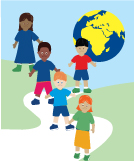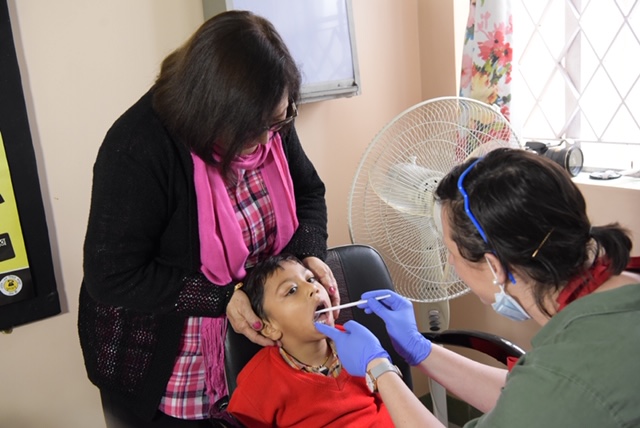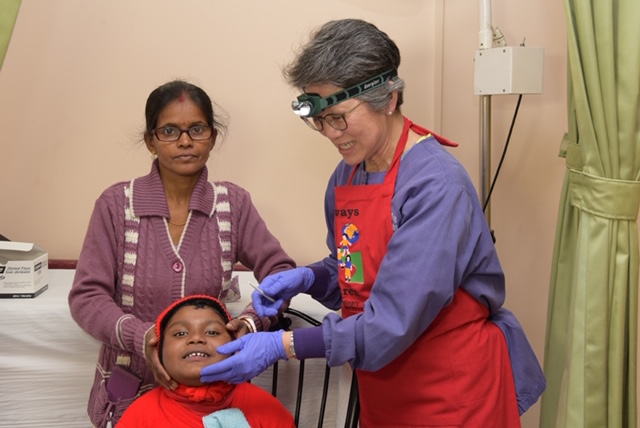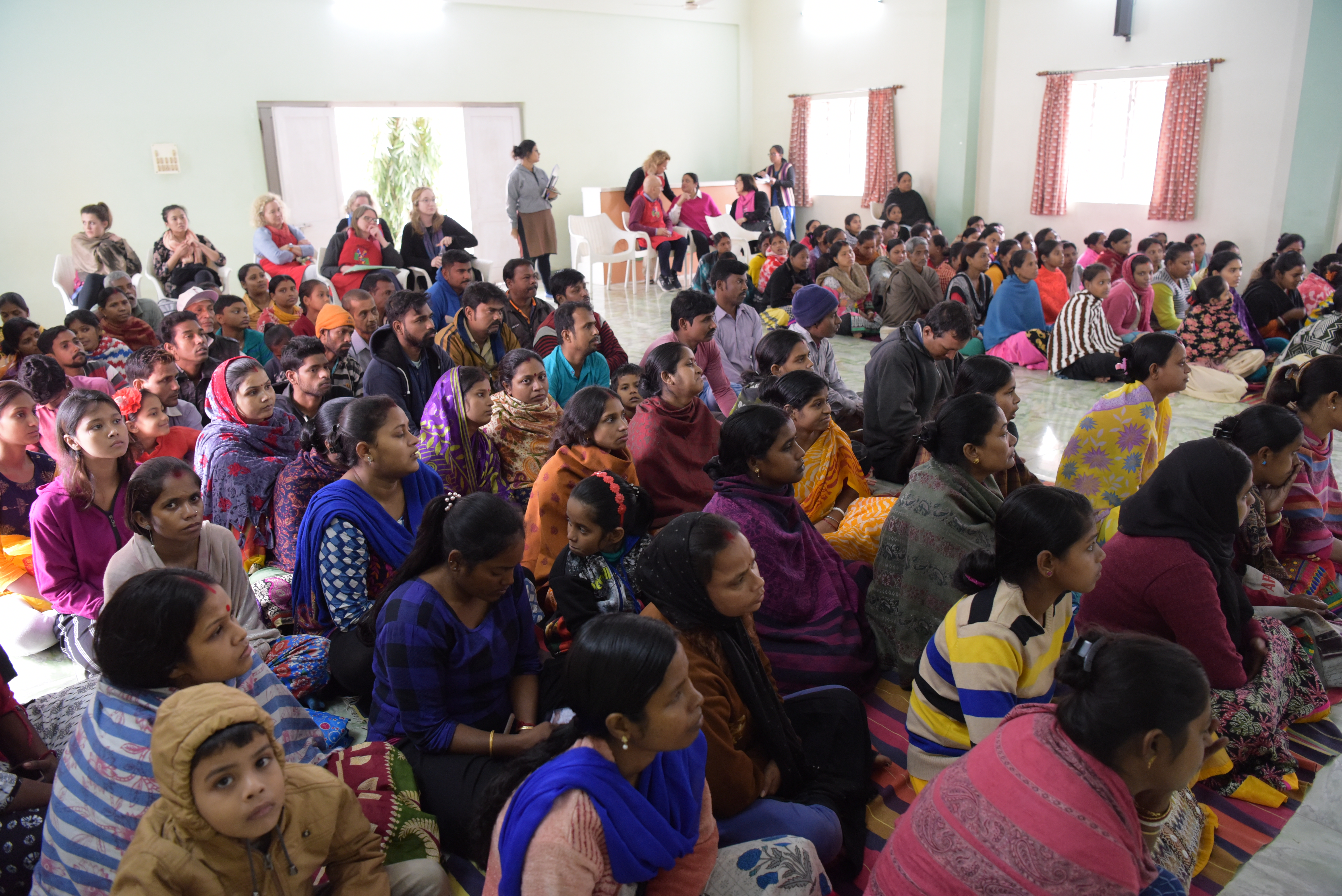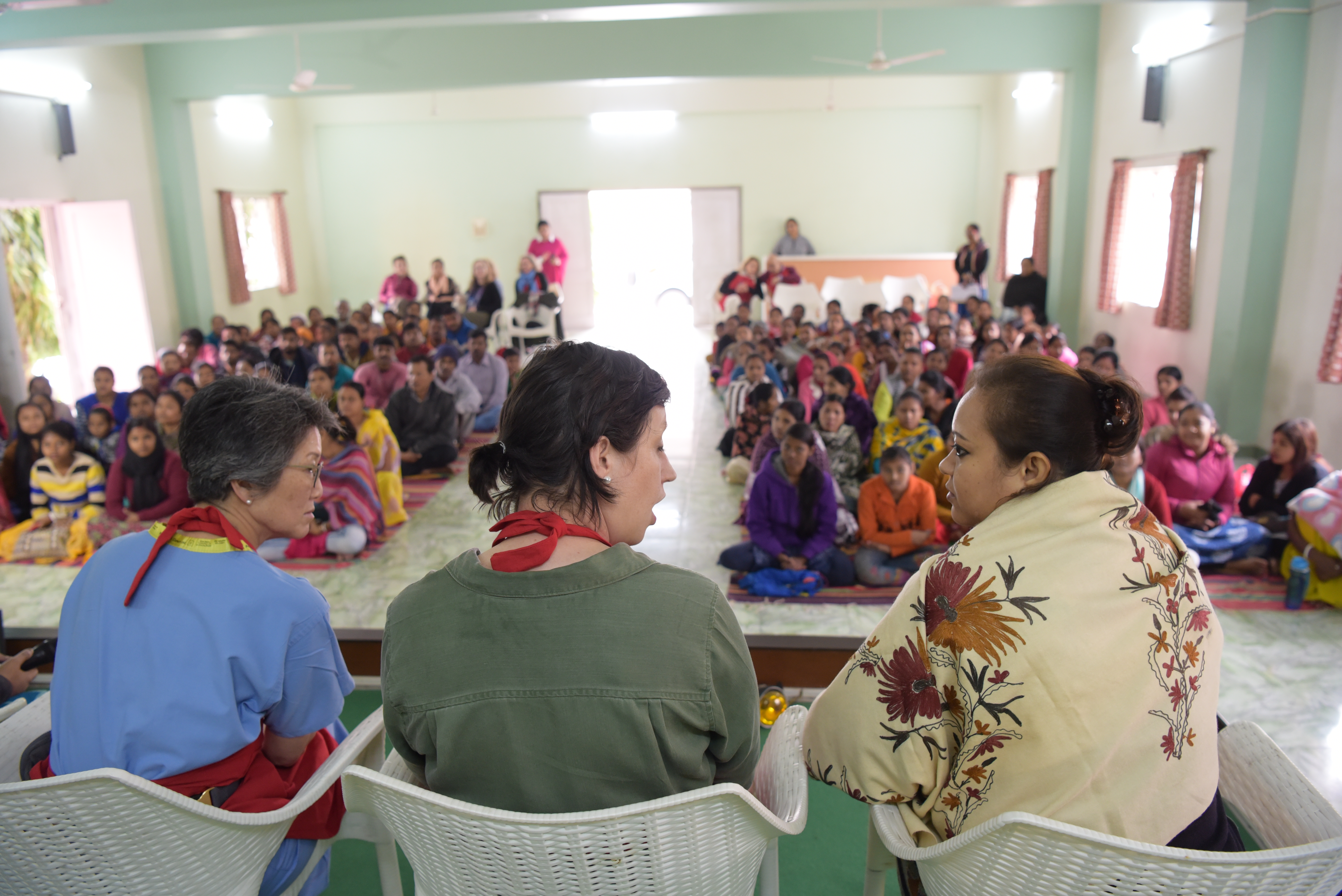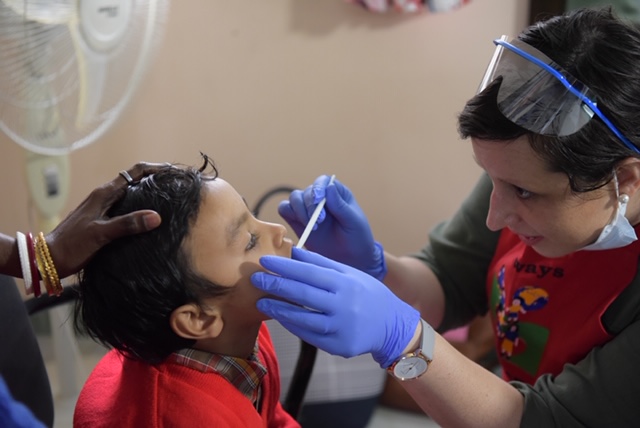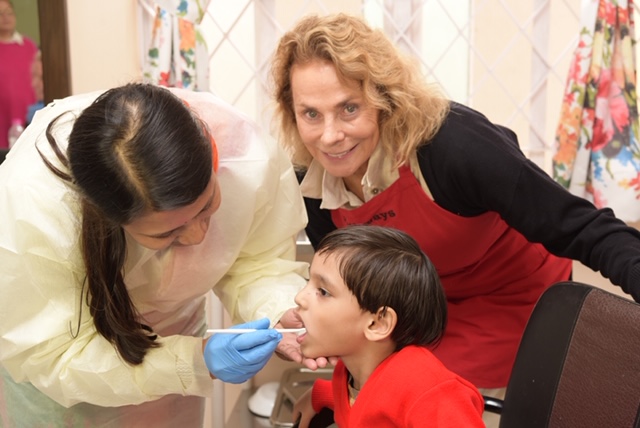January 10, 2020
Elise Sarvas, DDS, MSD, MPH, Clinical Assistant Professor, Pediatric Dentistry, University of Minnesota
“Open wide. Open big, big.” My English words didn’t translate well into Bengali, but by pantomiming opening my own mouth the child got the hint. When she opened, I used my mirror to check each surface of her teeth. As I moved from the back ones to the front, I called out each surface of decay to my transcriber – “Number B: distal occlusal. Number E: mesial, facial, lingual. Number F: mesial, facial, lingual. Number K: occlusal”. Dutifully Anne used a red pen to color in these areas on our odontograms – or tooth charts – to demarcate where the visible caries were located. Caries is the dental term for a cavity, and our charts were very colorful.
Over two days, we had two pediatric dentists from the United States and two local dentists from Kolkata screen 207 children at the Jan Seva School. These children ranged in age from 2 to 7 years old and included several children with special health care needs. Amounts of dental decay found mirrored and were slightly larger than their American counterparts. Fortunately, despite the large amounts of decay, we only saw two children with deep dental infections, also known as abscesses. These children were referred to the local dental college for treatment.
After the screenings we held two counseling sessions with the parents of the children. I asked how many of them struggled to brush their kid’s teeth and almost all of the hands were raised. I chuckled because this is the same problem our parents in the States have as well. We talked about the importance of parental supervision that is necessary to reach all the nooks and crannies of a child’s tooth with the brush. For many kids who brush on their own, they just use the time to eat the toothpaste and don’t actually scrub the bacteria and food off the tooth surface. We talked about what to do if a child cries during brushing (keep going), and how to position them at home to make it easier. Most of all we encouraged them to keep at it. The families at Jan Seva are so invested in doing what is best for their kids and we used that strength to give them one more tool to improve their health.
All children received a toothbrush, toothpaste with fluoride, and floss after their dental screening. The dental team is currently compiling and analyzing the data to determine the current dental need and use this to make tailored recommendations to Pathways for Children for a dental program at the school.
I would personally like to thank our wonderful scribes: Ms. Anne Hooley, Dr. Beth Virnig, and Mr. Zachary Levy for jumping in and learning all our dental terminology so quickly. Another thank you to our Indian dentists Drs. Disha Agarwal and Minakshi Pain and the medical clinic staff at Jan Seva for their help with the screenings. And the most heartfelt thanks to Grace Strangis and the entire Pathways to Children board for their commitment to the total health and well being of these students.
